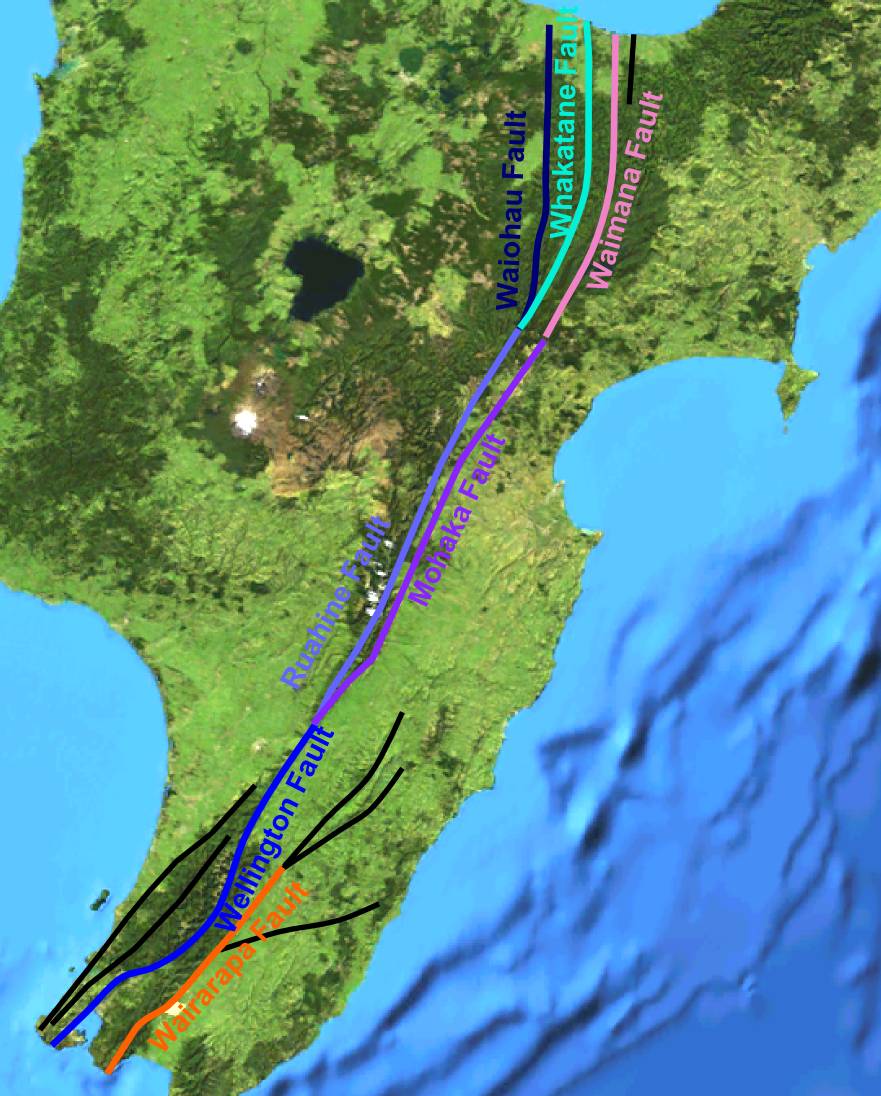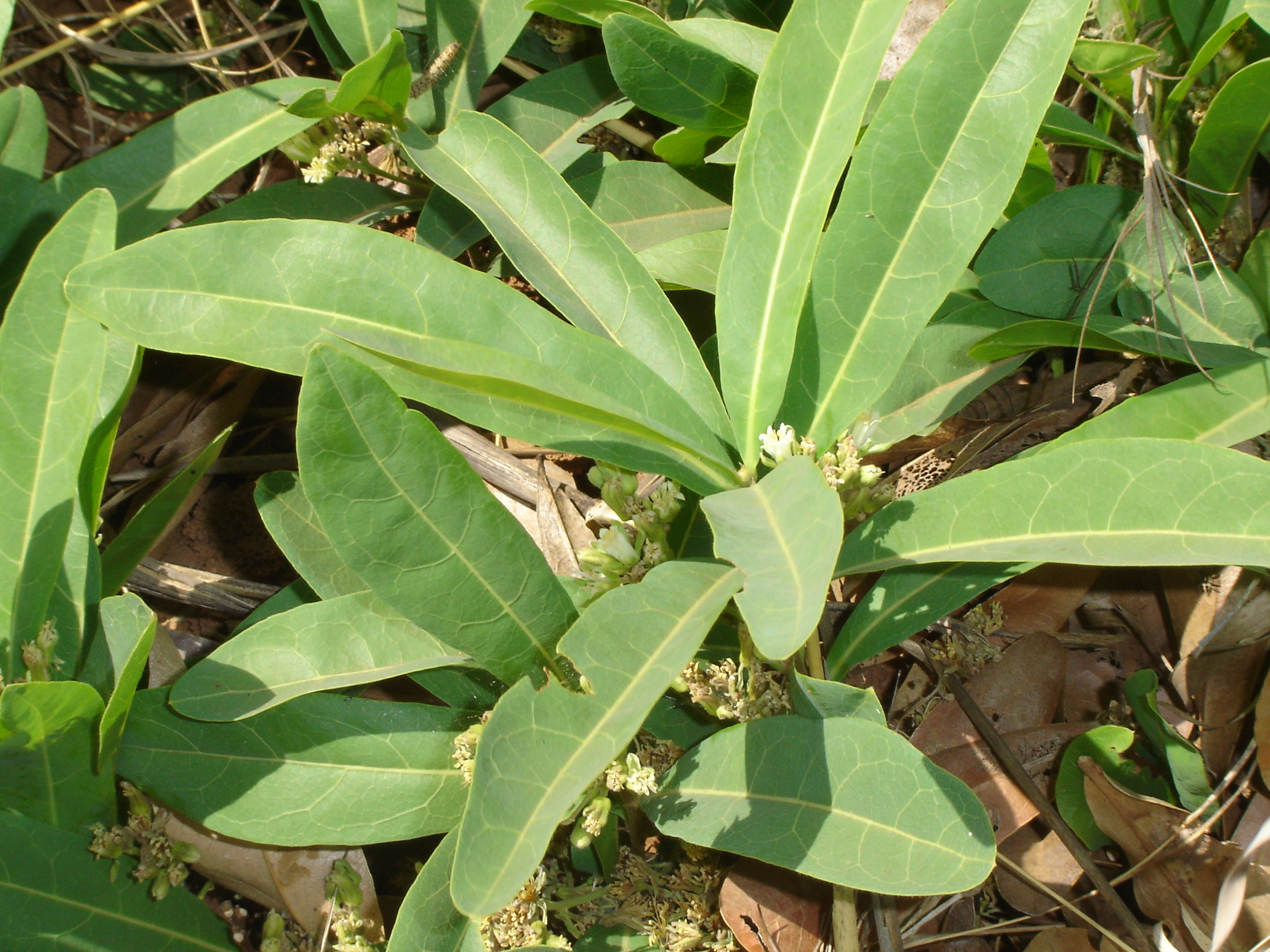|
Tararua Forest Park
Tararua Forest Park, often called the Tararuas is a protected area in the Wellington region of New Zealand. Its area is , and its highest point, a peak called Mitre, is at 1571 m above sea level. It was established in 1954, as New Zealand's first Forest Park, and is managed by the Department of Conservation (DOC) under the Conservation Act. Tararua Forest Park includes more than three-quarters of the Tararua Range, and its boundaries extend north from New Zealand State Highway 2. Project Kaka A DOC project launched in 2010, named Project Kaka aims to reduce numbers of rats, stoats and possums over 22,000 ha of the park. The pests will be controlled by aerial drops of 1080 poison with the goal of restoring native plant, insects and birds including kaka, kakariki and kereru. The project involves the use of sodium fluoroacetate (1080), trapping and wildlife monitoring. In 2013, DOC found that the programme had led to a "significant increase in the call counts of several bird ... [...More Info...] [...Related Items...] OR: [Wikipedia] [Google] [Baidu] |
North Island
The North Island, also officially named Te Ika-a-Māui, is one of the two main islands of New Zealand, separated from the larger but much less populous South Island by the Cook Strait. The island's area is , making it the world's 14th-largest island. The world's 28th-most-populous island, Te Ika-a-Māui has a population of accounting for approximately % of the total residents of New Zealand. Twelve main urban areas (half of them officially cities) are in the North Island. From north to south, they are Whangārei, Auckland, Hamilton, Tauranga, Rotorua, Gisborne, New Plymouth, Napier, Hastings, Whanganui, Palmerston North, and New Zealand's capital city Wellington, which is located at the south-west tip of the island. Naming and usage Although the island has been known as the North Island for many years, in 2009 the New Zealand Geographic Board found that, along with the South Island, the North Island had no official name. After a public consultation, the board officially ... [...More Info...] [...Related Items...] OR: [Wikipedia] [Google] [Baidu] |
Conservation Act
The Conservation Act 1987 is New Zealand's principal act concerning the conservation of indigenous biodiversity. The Act established the Department of Conservation (who administer the Act) and Fish and Game, and complements the National Parks Act 1980 and the Reserves Act 1977. The Conservation Act and the management strategies (CMS) and plans (CMPs) that are created under it have the overriding principle of "protection". This is contrasted with the overriding principle of New Zealand's most important planning statute, the Resource Management Act 1991 (RMA), which is "sustainable management" (s5, Resource Management Act 1991). Whilst there is often overlap between the RMA and the Conservation Act, the principle of protection has primacy over that of sustainable management. The Conservation Act also sets up a hierarchy of consideration of activities occurring on public conservation land under s6(e): :"to the extent that the use of any natural or historic resource for recrea ... [...More Info...] [...Related Items...] OR: [Wikipedia] [Google] [Baidu] |
Wellington Fault
The Wellington Fault is an active seismic fault in the southern part of the North Island of New Zealand. It is a dextral (right-lateral) strike-slip fault with variable amounts of vertical movement causing uplift to the northwest, as expressed by a series of ranges. It forms part of the North Island Fault System, which accommodates the transfer of displacement along the oblique convergent boundary between the Indo-Australian Plate and Pacific Plate. Geometry The Wellington Fault consists of three main sections. Wellington-Hutt Valley section This 75 km long curved fault segment is mapped on the floor of the Cook Strait before crossing the Wellington peninsula through Long Gully and along the northwestern edge of Wellington Harbour, past Lower Hutt terminating near Kaitoke. This segment has had a lateral slip-rate of 6.0–7.6 mm per year for at least the last 140,000 years, from the progressive offset of dated river terraces. The most recent rupture event along thi ... [...More Info...] [...Related Items...] OR: [Wikipedia] [Google] [Baidu] |
Cone Hut
A cone is a three-dimensional geometric shape that tapers smoothly from a flat base (frequently, though not necessarily, circular) to a point called the apex or vertex. A cone is formed by a set of line segments, half-lines, or lines connecting a common point, the apex, to all of the points on a base that is in a plane that does not contain the apex. Depending on the author, the base may be restricted to be a circle, any one-dimensional quadratic form in the plane, any closed one-dimensional figure, or any of the above plus all the enclosed points. If the enclosed points are included in the base, the cone is a solid object; otherwise it is a two-dimensional object in three-dimensional space. In the case of a solid object, the boundary formed by these lines or partial lines is called the ''lateral surface''; if the lateral surface is unbounded, it is a conical surface. In the case of line segments, the cone does not extend beyond the base, while in the case of half-lines, ... [...More Info...] [...Related Items...] OR: [Wikipedia] [Google] [Baidu] |
Landcare Research
Landcare may refer to: * Australian Landcare Council, a now superseded Australian government body * Landcare in Australia, umbrella approach promoting land protection in Australia * Landcare Research, New Zealand *The Landcare movement in Australia *The National Landcare Program, underpinned by Natural Heritage Trust legislation and government funding in Australia {{Disambig ... [...More Info...] [...Related Items...] OR: [Wikipedia] [Google] [Baidu] |
Sodium Fluoroacetate
Sodium fluoroacetate is an organofluorine chemical compound with the formula FCH2CO2Na. This colourless salt has a taste similar to that of sodium chloride and is used as a rodenticide. History and production The effectiveness of sodium fluoroacetate as a rodenticide was reported in 1942. The name "1080" refers to the catalogue number of the poison, which became its brand name. The salt is synthesized by treating sodium chloroacetate with potassium fluoride. Both sodium and potassium salts are derivatives of fluoroacetic acid. Natural occurrence Fluoroacetate occurs naturally in at least 40 plants in Australia, Brazil, and Africa. It is one of only five known organic fluorine-containing natural products. Fluoroacetate occurrence in ''Gastrolobium'' species ''Gastrolobium'' is a genus of flowering plants in the family Fabaceae. This genus consists of over 100 species, and all but two are native to the southwest region of Western Australia, where they are known as "poison peas ... [...More Info...] [...Related Items...] OR: [Wikipedia] [Google] [Baidu] |
New Zealand Pigeon
New is an adjective referring to something recently made, discovered, or created. New or NEW may refer to: Music * New, singer of K-pop group The Boyz Albums and EPs * ''New'' (album), by Paul McCartney, 2013 * ''New'' (EP), by Regurgitator, 1995 Songs * "New" (Daya song), 2017 * "New" (Paul McCartney song), 2013 * "New" (No Doubt song), 1999 *"new", by Loona from '' Yves'', 2017 *"The New", by Interpol from ''Turn On the Bright Lights'', 2002 Acronyms * Net economic welfare, a proposed macroeconomic indicator * Net explosive weight, also known as net explosive quantity * Network of enlightened Women, a conservative university women's organization * Next Entertainment World, a South Korean film distribution company Identification codes * Nepal Bhasa language ISO 639 language code * New Century Financial Corporation (NYSE stock abbreviation) * Northeast Wrestling, a professional wrestling promotion in the northeastern United States Transport * New Orleans Lakefront Ai ... [...More Info...] [...Related Items...] OR: [Wikipedia] [Google] [Baidu] |
New Zealand Kaka
New is an adjective referring to something recently made, discovered, or created. New or NEW may refer to: Music * New, singer of K-pop group The Boyz Albums and EPs * ''New'' (album), by Paul McCartney, 2013 * ''New'' (EP), by Regurgitator, 1995 Songs * "New" (Daya song), 2017 * "New" (Paul McCartney song), 2013 * "New" (No Doubt song), 1999 *"new", by Loona from '' Yves'', 2017 *"The New", by Interpol from ''Turn On the Bright Lights'', 2002 Acronyms * Net economic welfare, a proposed macroeconomic indicator * Net explosive weight, also known as net explosive quantity * Network of enlightened Women, a conservative university women's organization * Next Entertainment World, a South Korean film distribution company Identification codes * Nepal Bhasa language ISO 639 language code * New Century Financial Corporation (NYSE stock abbreviation) * Northeast Wrestling, a professional wrestling promotion in the northeastern United States Transport * New Orleans Lakefront Ai ... [...More Info...] [...Related Items...] OR: [Wikipedia] [Google] [Baidu] |
New Zealand State Highway 2
State Highway 2 (SH 2) runs north–south through eastern parts of the North Island of New Zealand from the outskirts of Auckland to Wellington. It runs through Tauranga, Gisborne, Napier, Hastings and Masterton. It is the second-longest highway in the North Island, after State Highway 1, which runs the length of both of the country's main islands. For most of its length it consists of a two-lane single carriageway, with frequent passing lanes. There are sections of four-lane dual-carriageway expressway at Maramarua, Tauranga and Wellington. Route SH 2 leaves just north of Pōkeno, south of central Auckland. It heads east, crossing the Hauraki Plains before running the length of the Karangahake Gorge, a break in the hills between the Coromandel Peninsula and Kaimai Ranges. From the mining town of Waihi it runs southeast, skirting the edge of Tauranga Harbour, which it crosses on the Tauranga Harbour Bridge before connecting to the Tauranga Eastern Link, a four lan ... [...More Info...] [...Related Items...] OR: [Wikipedia] [Google] [Baidu] |
Tararua Range
The Tararua Range, often referred to as the Tararua Ranges or Tararua, is one of several mountain ranges in the North Island of New Zealand. The Tararua Range runs northeast–southwest for from near Palmerston North to the upper reaches of the Hutt Valley, where the northern tip of the Remutaka Range begins. It is separated in the north from the southern end of the Ruahine Range by the Manawatu Gorge. Most of the Range is wilderness, protected as the Tararua Forest Park. The highest peak in the Tararua Range is Pukeamoamo / Mitre (not to be confused with Mitre Peak) at . Other prominent peaks include Mount Bannister at and Mount Hector at , which is named after the scientist Sir James Hector. Its Māori name is Pukemoumou, or 'hill of desolation'. Geography The Tararua Range is divided into two distinct northern and southern regions. Each of these is dominated by a central mountain peak: Arete in the north and Hector in the south. A total of ten rivers rise on the ... [...More Info...] [...Related Items...] OR: [Wikipedia] [Google] [Baidu] |
Department Of Conservation (New Zealand)
The Department of Conservation (DOC; Māori: ''Te Papa Atawhai'') is the public service department of New Zealand charged with the conservation of New Zealand's natural and historical heritage. An advisory body, the New Zealand Conservation Authority (NZCA) is provided to advise DOC and its ministers. In addition there are 15 conservation boards for different areas around the country that provide for interaction between DOC and the public. Function Overview The department was formed on 1 April 1987, as one of several reforms of the public service, when the ''Conservation Act 1987'' was passed to integrate some functions of the Department of Lands and Survey, the Forest Service and the Wildlife Service. This act also set out the majority of the department's responsibilities and roles. As a consequence of Conservation Act all Crown land in New Zealand designated for conservation and protection became managed by the Department of Conservation. This is about 30% of New Z ... [...More Info...] [...Related Items...] OR: [Wikipedia] [Google] [Baidu] |






